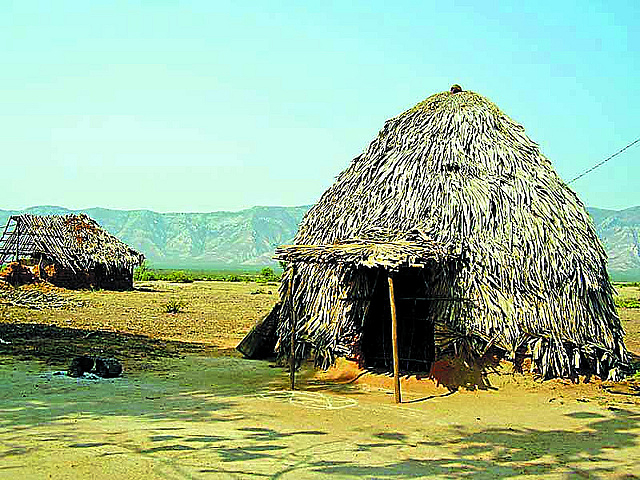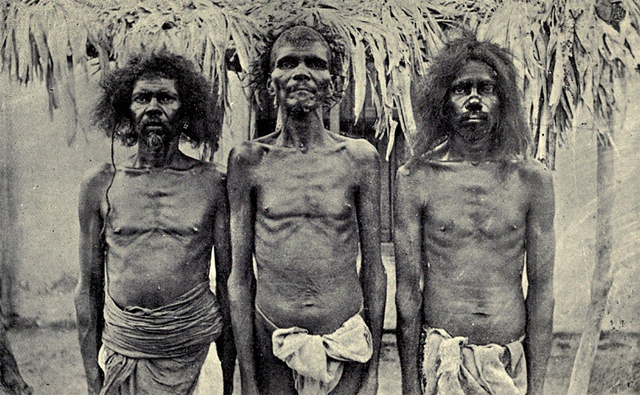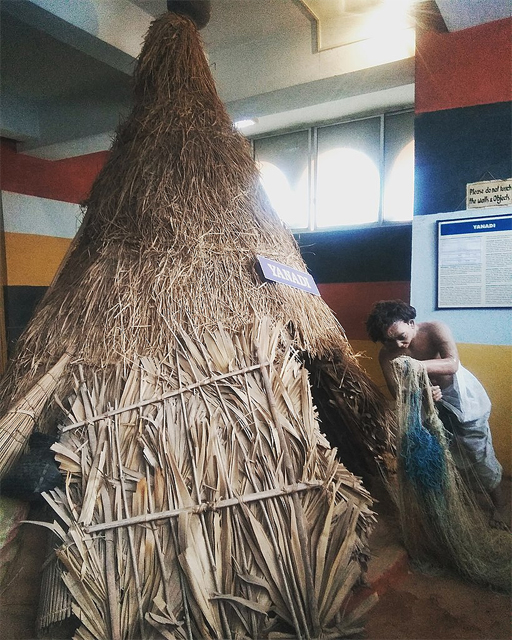The reporter was clearly impressed with some aspects of a small Yanadi crab-fishing community located along the banks of an irrigation channel in coastal Andhra Pradesh. The community, consisting of just 13 houses, is near Vadapalem hamlet in the Machilipatnam Mandal of Krishna District. In a news report published by The Hindu on December 22, the people explain to the reporter that they very much appreciate the unpolluted fresh air in their isolated area.

Both men and women participate in crab hunting at the edges of the mangrove forests along the coast. The crabs are exported to other Asian countries and they are cultivated in brackish ponds in the district. They prefer to keep their children engaged in crab hunting rather than attending school—education has a lower priority in this community.
The reporter focuses the article on the construction and maintenance of their houses since the Yanadi, especially the women, are “masters” at constructing their homes out of cow dung and mud. Other family members and their Yanadi neighbors assist by building the pole frameworks of the houses and laying the roofs. The reporter examines the home of Eega Ramanamma. It has three rooms, including a bedroom and a hall under its thatched roof. It also has a kitchen designed for storing water and grains and of course for cooking, plus a fireplace made of mud bricks.

Ms. Ramanamma tells the reporter that the thatched roof made of grasses obtained from the river would last for five years and the mud walls of the dwelling had the same life expectancy. The daughter of a crab hunter, she explained that they apply cow dung to the walls periodically to maintain their smoothness. The Yanadi decorate their houses with designs of birds and flowers using chalk powder on the walls and rice powder on the floors.
Stanley Jaya Kumar’s 1995 book Tribals from Tradition to Transition provides additional details about the Yanadi traditional houses and their construction. He writes that the people have been abandoning houses provided by the government since they have tended to collapse during the rainy seasons. Instead, they have been going back to their traditional styles of house construction which vary according to the availability of local materials.
Their houses are scattered about in pleasant-looking clusters that may take up a fairly large area but they tend to be arranged according to kinship relationships, with the homes of brothers being located close together. The huts are usually rather bare of furniture except for a modest number of cooking utensils. The people clean the insides of their houses and they periodically smear cow dung on the walls to help keep them that way.

The cost of the houses is minimal since the people build them out of local materials available from the forests. The family members build them without any assistance from outside paid workers. The author indicates that a typical conical hut can be built by a family in a single day. It is easy to replace the roof as often as necessary.
The Yanadi studied by the author did observe some rituals when they first moved into a newly-constructed house. After marking the center with vermilion, they would break open a coconut or sacrifice a chicken to the deity of the household. They might invite relatives to a house-warming ceremony and dinner. Mondays and Thursdays are auspicious days for holding such ceremonies.
It appears from the recent news report as if Stanley Jaya Kumar’s description of the Yanadi traditional housing is still accurate.